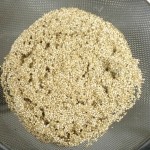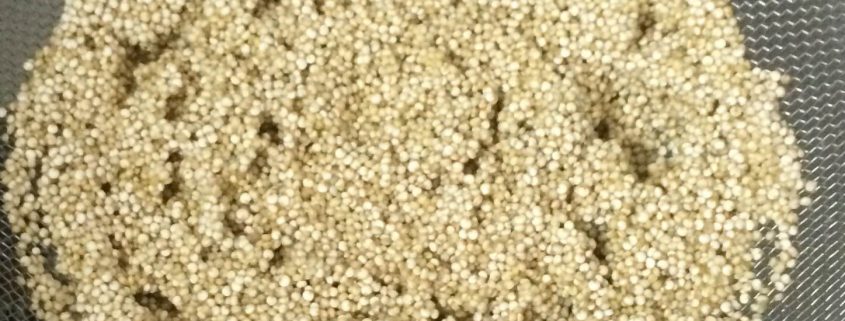December Monthly Morsels
 The Magic of Quinoa
The Magic of Quinoa
By Charna Sheinfeld, Nutrition Intern
Most people have heard and probably tasted Quinoa by now. It was only a few years ago that quinoa was an item only found in specialty health food stores, reserved for those “health nuts” among us to enjoy. So what is so special about this pseudo grain that lead to its transition into mainstream supermarkets and use in restaurants, foodservice establishments, and even our private homes?
Quinoa originated in the Andes region in South America, and was a food staple of the Incas. In fact it was termed “the mother grain” as they believed that eating it would bestow a good healthy life upon them. Interestingly, quinoa is not actually a grain but a seed that is part of the goosefoot family, and is in close relation to beetroots and spinach.
One of the remarkable qualities of quinoa is that it contains a very high protein content for a grain. At 14% protein by mass, its protein content per 100 calories is higher than brown rice, barley and potatoes. Most nutritional evaluations believe that it is a complete protein, meaning it contains all nine essential amino acids, and specifically lysine which is usually a limiting amino acid in other grains.
Quinoa is also a rich source of both soluble and insoluble dietary fibers. Fiber contributes to a healthy digestive system, in addition to reducing cholesterol levels and high blood pressure. Moreover, because fiber takes a longer time to be digested by the body, it remains in the system for longer keeping you fuller and satisfied for a longer period of time.
Quinoa is also a good source of calcium making it useful for those who are lactose intolerant and vegans. It is also high in phosphorus, magnesium and iron. On top of all these great attributes, quinoa is also gluten free, making it a great choice for those with celiac disease.
Oleic acid, one the healthy fats found in olive oil that is touted for being heart healthy, is also found in quinoa. This contributes to prevention of cardiovascular diseases.
It is important to note that the seeds of quinoa in their natural state have a coating of saponins which are bitter tasting chemicals. This actually is beneficial to the seeds while they are growing because they require minimal protection from birds and other animals. However, once cultivated, it needs to be processed to remove the coating before being sold. Even so, unless specified on the package, quinoa needs to be thoroughly rinsed before cooking to remove all the bitter saponins. It is best to use a fine mesh strainer as the grains are very small and you do not want them slipping through the holes of the strainer.
Quinoa is great to use in a main dish, soup, salad, or a side. It is lately being sold in various form such as quinoa pops for dry cereal and quinoa flakes to be cooked like hot cereal similar to farina. There are several forms as well, including the standard white quinoa, in addition to the red and black varieties.
And last but not least, quinoa is extremely easy to cook and can be used as leftovers or cooked in advance. I love cooking a large pot of quinoa in the beginning of the week and adding a tablespoon here and there to my salads and soups. It gives me an added boost of fiber and heart healthy nutrients in addition to being tasty and satisfying!
Here are two newly created quinoa recipes for you to try. Don’t forget to come back and comment. I’d love to have your feedback.
Roasted Pepper and Edamame Quinoa Salad


Leave a Reply
Want to join the discussion?Feel free to contribute!